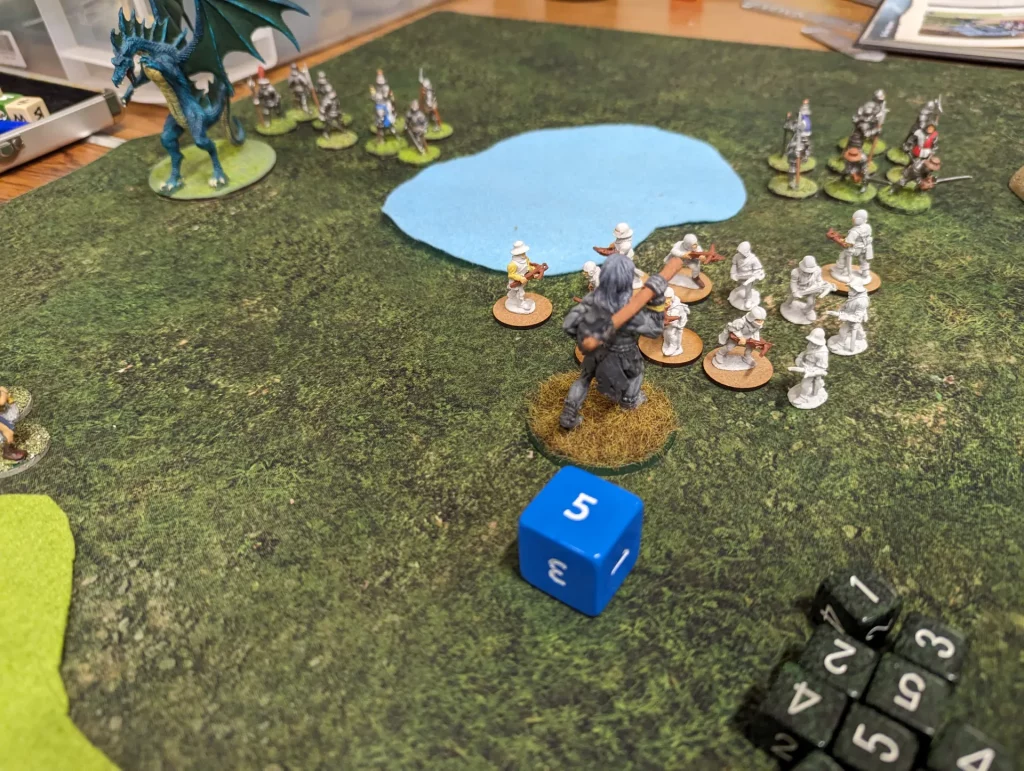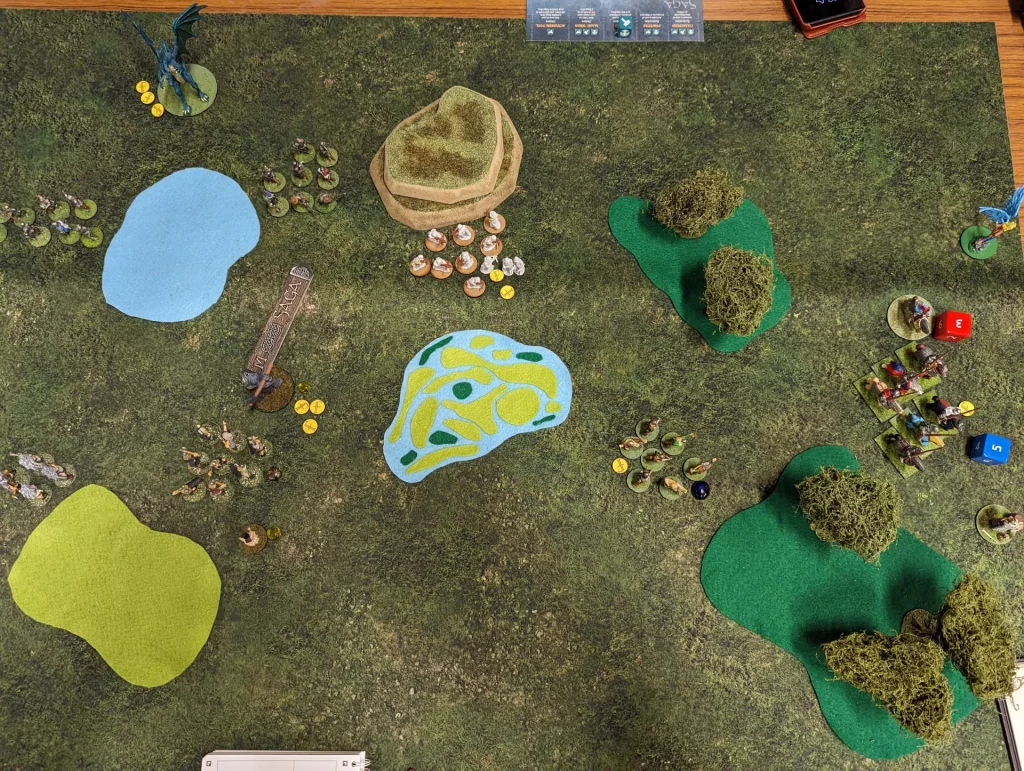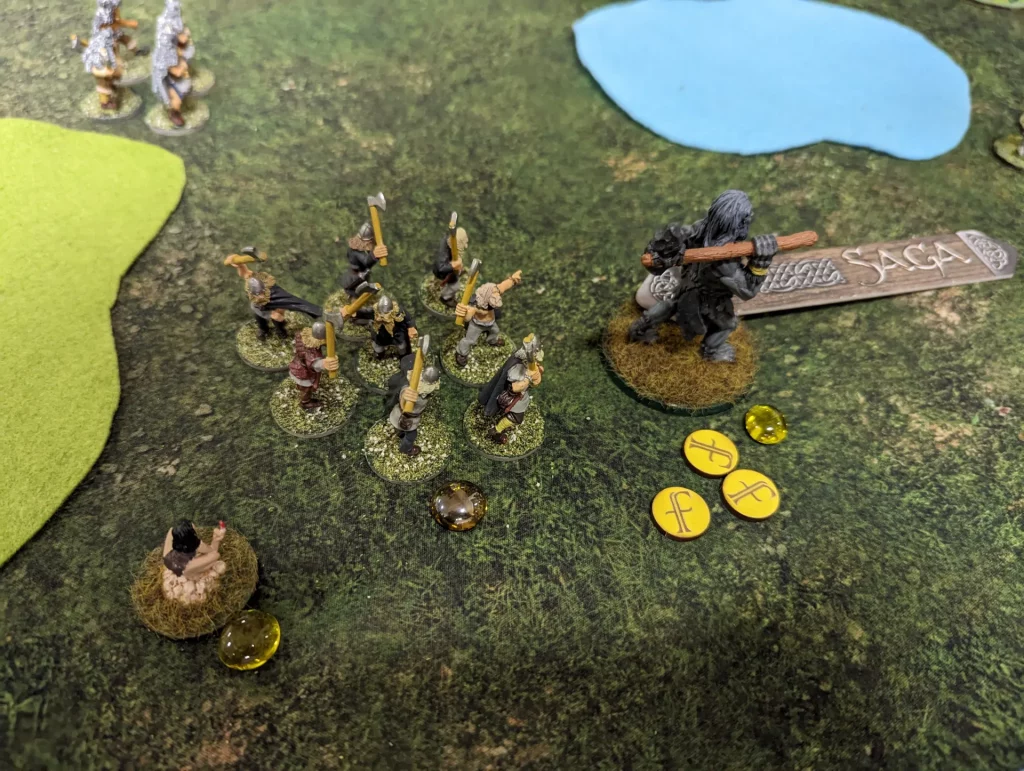Kingdoms and Hordes
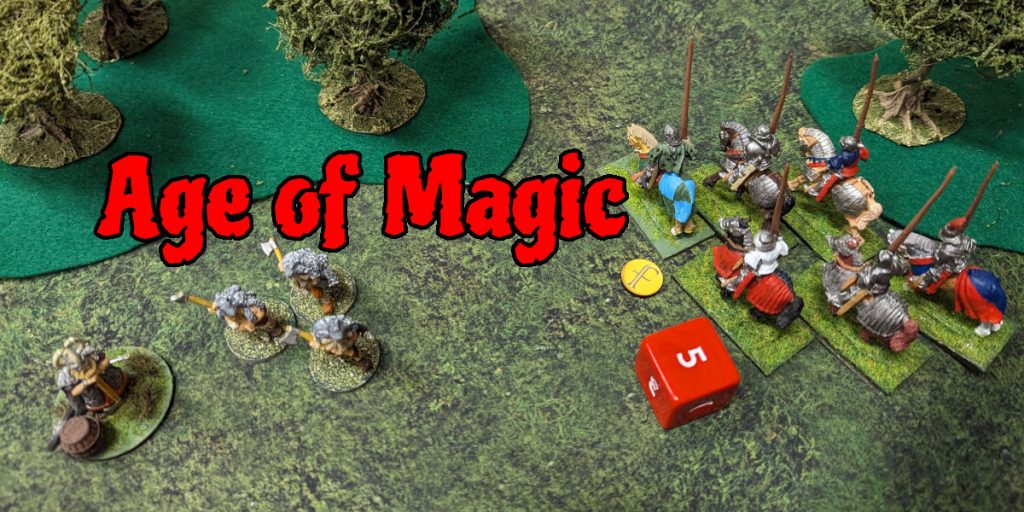
We still don’t have much time for preparing anything, so this week we threw together a game of Saga: Age of Magic. I used my Vikings to put together a Horde army, who were going up against a human Great Kingdoms army. Both eight points.
Scenary setup was marshy ground, with hostile terrain which meant all uneven terrain was considered dangerous. The length of the game would be 5 turns, but in the end we didn’t come anywhere close to that since we also rolled for a pincer deployment. This allows both armies to begin really close to each other, which means first charges invariably happen within the first turn and the battle doesn’t go on for much longer than that.
For my Horde, I had three units of Hearthguards, a unit of archers, a unit of warriors, a giant (Titan), a couple of quadruped creatures (worgs), a witch as a sorceress plus my warlord.
The Great Kingdoms went for three units of mounted Hearthguards (formed into two units of six), a flying sorceress, a dragon scourge, a unit of crossbowmen and two units of warriors, along with a mounted warlord.

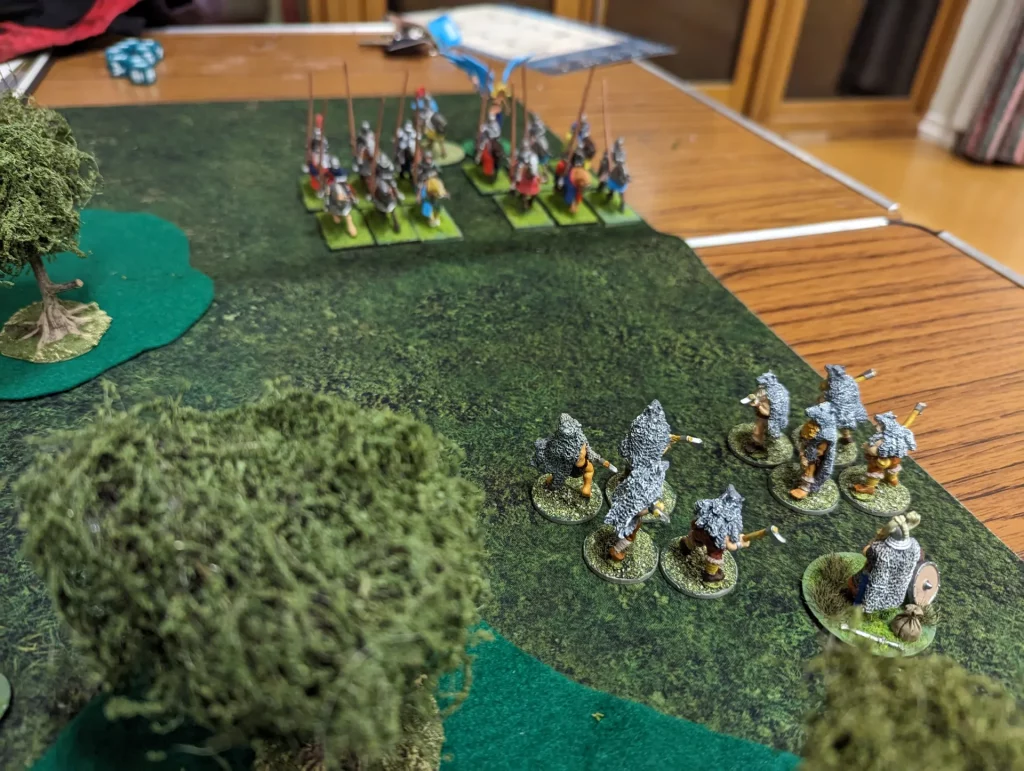
Turn one opened with the Hordes going first. My unit of worgs charged the dragon – because why not? If I could kill it quickly, then it would be a big blow to the Kingdoms. It managed to soak all the hits it took with resilience, and my creatures were left with three fatigue their use of resilience, and had to fall back (then took another fatigue from having a melee). Both units could take four fatigue before becoming exhausted.
My giant charged the (rather ghostly looking, since they are still unpainted) crossbowmen, and did really badly. Both sides took one hit, which I soaked and they took a casualty.
Facing two large units of mounted hearthguard, I left by hearthguard on the eastern flank as they were, protecting my warlord.
It was then the Kingdom’s turn, and the dragon opened up with a breath weapon attack on my worgs, killing both of them.
On the eastern flank, the mounted knights charged, and my units stood Shoulder to Shoulder, giving my hearthguard a bonus of 3 attack and defence dice. The horde unit was wiped out – but it also took all the attacking knights with them. A fair trade, given that the knights was worth 1½ points.
Their Sorcerer then took it upon herself to use her magic. One of my remaining hearthguards was killed with a Bolt, then my levee archers were Blinded. Finally, she called down a Mist which cut line of sight to Medium range. This was fortunate for me, because it meant the second mounted unit could no longer see my hearthguard in order to charge them. Instead, they went for my archers. Five were killed, but one knight fell as well.
The crossbowmen were still within visibility range of the Horde’s giant, so they took shots at him. He took a single fatigue, taking him up to three.
As a final assault, the mounted knights performed a second charge, attacking the three remaining hearthguard defending my warlord. No knights fell, but the barbarian bodyguards were wiped out.
At the beginning of turn two, and already there has been a considerable amount of blood letting. My barbarian warlord was left defenceless against the Knights and the Sorceress, so I decided to go for glory and make use of Me First! which gives me attack bonuses if my first activation is a charge.
So my warlord charged the five knights in a heroic attempt to wipe them out. I also used Rage, which gave me an extra four attack dice, taking me to the maximum of 16. I got ten hits, and wiped out the entire unit of knights. Unfortunately, they got 8 hits on me and my warlord went down in bloody combat.
Over on the western flank, my Witch used Animal Powers to try and remove fatigue from my Giant. She rolled high on the magic dice, and chose to risk abuse of power. For a spell casting, you roll to see how effective the spell is, and the most effective level also requires a roll on a table to see if the sorcerer blows themselves up. She took some fatigue, but otherwise completed the spell. This allowed me to remove two fatigue from the giant, and activate it.
So the giant trundled slowly forward (Titans are slow), and got within charge range of the crossbowmen. Seven of them were slain, and the giant took a single fatigue in response.
My last remaining unit of barbarian hearthguards charged some warriors, but did badly. They killed one enemy, but took two casualties, so fell back.
It was now down to the Kingdoms to finish things off. With the mist now lifted, the Sorceress started things off with a bolt attack on my giant, giving him more fatigue, then the Kingdom’s heavy infantry charged in. My giant fought valiantly – three warriors went down, but he took 10 hits and saved against seven of them. He was still dead though.
My remaining hearthguard were then wiped out my the other unit of warriors, and the Sorceress cast more magic, blinding my remaining warriors and calling down a Mist again.
I didn’t have much left at this point, except for my Witch, a few (blinded) warriors and some levee archers. So, at the beginning of turn three, I conceded the battle.
Setup had taken a while, because we were building the armies as we got them out of their boxes. But the game itself only lasted two turns, taking a bit over ninety minutes. The Age of Magic rules are nicely generic, allowing you to build almost any type of army you want, with whatever figures you have. In this case we used my Vikings as a barbarian horde, and human knights as a Great Kingdoms army. They are also a bit generic, and don’t have quite the same flavour of the more historical Saga armies. The battleboards especially aren’t quite as fun.
With eight point armies, things are also a bit more complicated. I see why eight points are recommended for Age of Magic – it’s really easy to spend half your points on a few creatures and monsters. Games like Warhammer are really geared up for this, scaling up to allow massive armies of fantasy creatures. Saga is much more limited in the size of armies you can have.
As before, my opponent made much better use of magic than I did. I had been expecting the Dragon to drop in on my Witch at any point, or for her to be a target of crossbow bolts, so was afraid of bringing her forward where she could be more effective. Some mistakes were made on abilities, and lots of both good and bad rolls.
The lack of time to properly prepare a couple of warbands also didn’t help. Hopefully by next year I will have more time available to start building some proper warbands (including my Imperial Roman army, and my Goblins).
